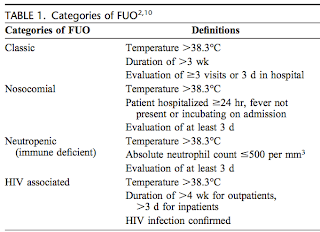 Today we talked about a case of acute hypoxia in an elderly gentlemen with a history of dysphagia, stroke, seizures and dementia.We covered the differential for acute hypoxia and then identified that the most likely cause in our patient was aspiration pneumonia, with pulmonary embolus on the differential.
Today we talked about a case of acute hypoxia in an elderly gentlemen with a history of dysphagia, stroke, seizures and dementia.We covered the differential for acute hypoxia and then identified that the most likely cause in our patient was aspiration pneumonia, with pulmonary embolus on the differential.1) Causes of Acute Hypoxia: The differential for hypoxia is extensive, but the differential for sudden onset severe hypoxia is not as long.
- Pulmonary embolus
- Pneumothorax
- Pulmonary edema (cardiogenic/non-cardiogenic)
- Pulmonary hemmorhage
- Aspiration pneumonia
- Bacterial pneumonia
- Mucous plugging
2) Aspiration: Defined as misdirection of oropharyngeal or gastric contents into the larynx and lower respiratory tract. There are two entities: Aspiration pneumonitis and pneumonia. Aspiration pneumonitis can lead to ARDS and carries a high mortality (up to 12%). It can present with fever and hypoxia. Treatment is supportive. Use of glucocorticoids is controversial and animal studies have shown variable results.
Half of healthy adults aspirate during their sleep, but are protected from developing aspiration pneumonia by the following mechanisms: low virulent bacterial load in orophargyngeal/gastric contents, active ciliary transport, normal cough reflex, cellular and humoral immune system to help clear infection.
- Risk factors for aspiration include
- Decreased LOC caused by drugs or toxins (i.e. EtOH)
- Stroke/neurologic injury causing dysphagia/impaired cough reflex
- Seizure disorder
- Degenerative CNS disease: dementia, Parkinson's, ALS
- Dysphagia: esophageal stricutre, diverticulum etc.
- Recent anesthetic
- ETT/Trach/NG tube
- Frequent reflux/vomitting/gastric outlet obstruction
- Risk factors for developing aspiration pneumonia:
- Poor dentition
- Treatment with PPI
- Underlying lung disease
- Immunosuppression/decreased cellular immunity
- Colonization of oropharynx with s. aureus, GNB (Klebsiella pneumonia, Escherichia coli)
- Common bacterial pathogens:
- Oral anaerobes: Fusobacterium, Bacteroids, Peptostreptococcus
- Gram negative bacilli: Klebsiella, E. coli
- S. aureus
- Management:
- Swallowing assessment: by SLP +/- Video Fluoroscopic Swallowing Study (VFSS)
- Dysphagia diet
- Antibiotics
- When anaerobic bacteria is the most likely pathogen: consider Clindamycin
- Other regimens that also cover CAP:
- Amoxicillin-Clavulanate
- Moxifloxacin
- Flagyl plus Amoxicillin or Penicillin
- For nosocomial pneumonia and pt is unwell and coverage for both aerobic and anaerobic bacteria is important:
- Pipericillin-tazobactam
- Carbapenems
- Management of dysphagia:
- Studies have looked at using dopamine agonists and ACEi to increase substance P, which enhances swallowing and the cough refelx.
- Percutaneous feeding/PEG tube has not been shown to increase survival, quality of life or decreased aspiration events

The following is a systematic review of the evaluation and management of dysphagia due to dementia in the elderly:
http://bf4dv7zn3u.search.serialssolutions.com.myaccess.library.utoronto.ca/OpenURL_local?sid=Entrez:PubMed&id=pmid:22608838








